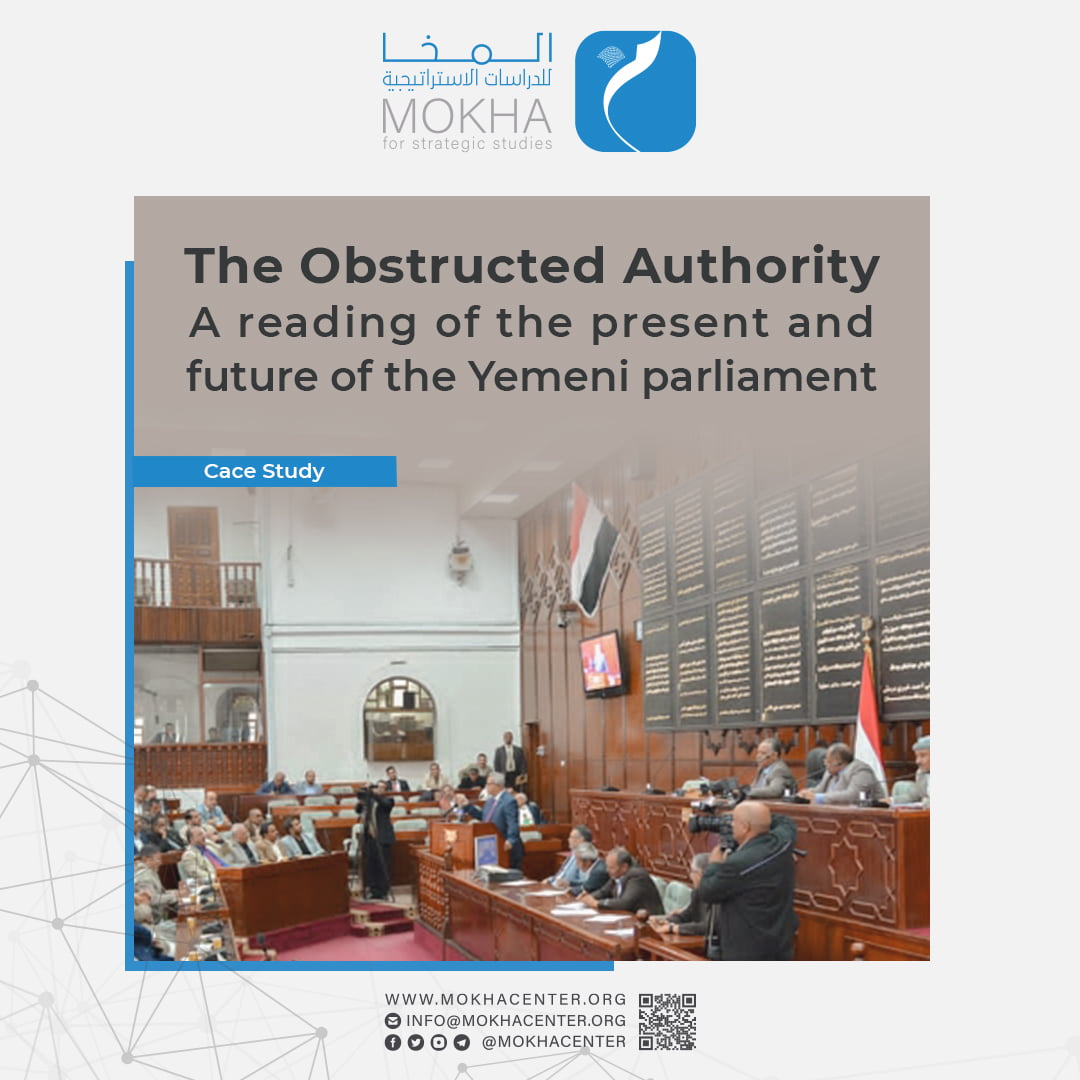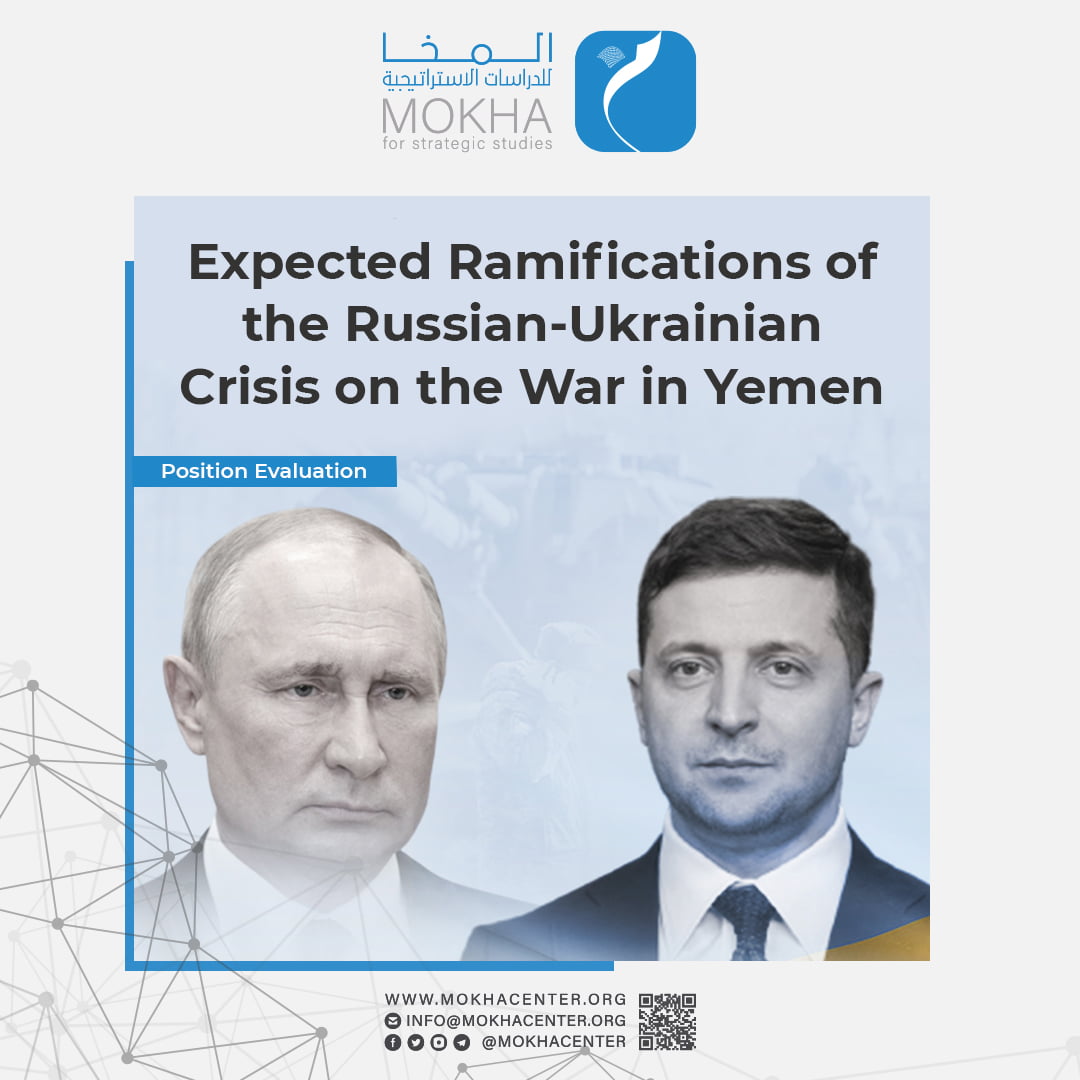Yemeni currency collapse: Path and repercussions

| Getting your Trinity Audio player ready... |
Introduction
Yemen is in a catastrophic situation due to the unprecedented depreciation of the Yemeni currency, where the price of one U.S. dollar exceeded 1,700 Yemeni Riyals, in the areas of the internationally recognized government territories, before returning to nearly 1,400 Riyals in mid-December. This has led to a dramatic increase in the prices of goods and services, exacerbating the living and humanitarian crisis far beyond the reports of international and humanitarian organizations.
With the internationally recognized government’s inability to resume their work efficiently, the majority of State employees not getting paid their salaries and the erosion of the value of salaries for those paid during the time when the cost of goods and services was high, Yemen is close to facing famine and an imminent popular explosion, with no Saudi intervention to date that could help save the situation.
This evaluation examines the course of the shift in Yemeni currency prices, the causes of the collapse of the Yemeni Riyal, the drastic effects and the possible repercussions of this situation.
The exchange rate path of the Yemeni Riyal:
Despite what Yemen suffered as a result of the political conflict in 2011, the Government of National Accord was able to maintain the value of the Yemeni currency in a relatively stable state, where the official exchange rate was around 215 Riyals to the US Dollar.
However, the rate of the riyal has deteriorated steadily following the Houthi-launched war in mid-2013, which ended with the fall of the capital, Sana’a, by their militias on September 21, 2014; later, there was subsequent foreign military intervention led by Saudi Arabia, on March 26, 2015.
These conditions of the war have caused the economy to stop developing and to deteriorate, as well as its alarming crash, leading to the destruction of infrastructure, the cessation of most economic sectors (governmental and civil), the flight of national and external capital and the tampering and looting of State resources by several parties that have imposed their control over the territories.
The war has also had horrific humanitarian repercussions as a result of civilians getting murdered and displaced, as well as the Houthis inflicting injuries on them. Yemen has also been denied access to the foreign exchange as a result of the suspension of exports, as ports have been suspended and disrupted.
While Yemen relies on 90% of its imported goods from abroad, financing for the purchase of essential needs and goods has drained the central bank’s foreign-exchange reserves, falling from $4.6 billion US by the end of 2014 to only $700 million US by September 2016.
This prompted the internationally recognized government to decide to move the central bank to Aden that same month.
In the absence of income resources for the government, it tried to cover salaries through the issuance of new editions of its national currency.
In January 2017, the Central Bank of Yemen in Aden received a batch of new banknotes (printed in Russia) amounting to 200 billion Yemeni Riyals. By the end of 2019, the value of the banknotes printed was 1.7 trillion Yemeni Riyals. As a result of the increase in the supply of the national currency (in exchange for the limited difficult currency obtained by the government), in late 2014, the known price fell from 215 Riyals per US dollar to 516 Riyals per US dollar in late 2018.
During that time, the Saudi Government contributed (and deposited) $2 billion US in March 2018 to help the Central Bank of Aden maintain a reasonable amount of exchange-rate stability.
That deposit was used to support the import financing mechanism and to open letters of credit to ensure the provision of basic food commodities in the country (such as wheat, sugar, rice, milk and cooking oil) through a preferential exchange rate. This contributed to maintaining the relative exchange-rate stability from 2018 to the end of 2020.
Reasons for the depreciation of the Yemeni currency:
In addition to the war and its repercussions, other factors have contributed to the deterioration of economic conditions, the collapse of the currency rate and the high cost of living. These factors include:
- The Houthis refrain from supplying State resources:
The Houthis control the central bank in Sana’a, formed their own government and sought to collect huge financial resources, while refusing to transfer those State resources to the central bank in Aden. At the same time, the Houthis failed to pay the salaries of the employees and engaged in a currency-exchange war with the internationally recognized government.
In mid-2017, they banned the handling of the new version of the Yemeni currency, issued by the Central Bank in Aden, after they had allowed it to circulate for some time. In 2018 and 2019, they carried out large-scale campaigns to prevent the circulation of new printed banknotes, confiscating a large amount of them.
This situation has produced two competing banking systems, exaggerated commissions, widespread suffering for citizens and a continuing deterioration in the value of the currency.
While the Houthis benefited from the Saudi’s deposit, which ensured the provision of affordable basic goods across the country, they also benefited from their control over the capital, Sana’a, which is the country’s financial capital, and their ban on the new banknotes from Aden, as they imposed high transfer fees, and keeping the exchange rate in their area of control, within the range of 600 Yemeni Riyals per US dollar.
- Obstructing the Southern Transitional Council (STC) of the internationally recognized government:
By taking control of Aden and other areas in the southern provinces, the STC had disrupted State institutions, as well as obstructed the government from carrying out its functions and resuming its responsibilities.
On April 25, 2020, the STC declared “self-administration” and a “state of emergency” in the southern provinces.
The head of the self-administrative department, Ahmed Bin Brik, issued a decree authorizing all institutions and administrative agencies in the southern provinces to deposit their revenues into an STC bank account in the National Bank of Yemen. Customs and tax offices operating in the Al-Maala District’s customs-free zone and the oil port of Aden were forced to deposit their revenues into the same account at an STC account in the National Bank of Yemen, not at the Central Bank. The Central Bank’s offices in the port of Aden were also closed, and 639 million Yemeni Riyals of customs duties revenues were confiscated and transferred to the STC account at the National Bank.
- Preventing the export of gas and oil:
The UAE government, the second partner in the Arab coalition and military operations in Yemen after Saudi Arabia, has adopted a policy of controlling several Yemeni ports and disrupting the government’s exporting of gas and oil, as UAE forces control the port of Balhaf in Shabwa province to date, thus preventing the export of gas and oil from the port.
This UAE policy deprived the Yemeni government of nearly $6 billion US a year, which could have been collected as revenues for the sale of oil and gas and would have provided two-thirds of the government’s foreign-exchange income. This has led to a decline in the price of the Yemeni Riyal and exacerbated its crisis.
- Corruption and neglect of the government:
The internationally recognized government’s role, with respect to its handling of the economic and financial situation, was limited to issuing new banknotes of the national currency, relying on external support and foreign aid, along with the absence of governance, transparency and procedures to review the performance of the central bank, as well as widespread corruption in its various institutions, although the government officials’ salaries are paid in US dollars, while the rest of the rest of the lower categories government employees get their salaries paid in Yemeni Riyal.
There are suspicions about how the government has been managing the Saudi deposit, as the UN Security Council’s panel of experts, in a report published on January 25, 2020, accused the Yemeni government, the central bank and traders (who had been importing food commodities) of facilitating the embezzlement of $423 million US from the Saudi deposit and reduced the use of the letter of credit system. The report stressed that the prices of imported goods, based on the preferential price, were not significantly tangible.
- Imminent explosion and inconsistent solutions:
The value of the Yemeni Riyal has continued to rapidly depreciate over the last three months. The value of one dollar in the areas of the internationally recognized government amounted to more than 1,700 Yemeni Riyals per US dollar, before returning to 1,400 Yemeni Riyals.
This collapse has led to a dramatic rise in the prices of goods and services, widened misery and deprivation and has brought large numbers of citizens closer to famine, particularly since a large part of them have not received their salary benefits for nearly five years — but even those who are lucky enough to get their salary are not paid enough to pay for the basic necessities of living.
The World Food Programme (WFP) has warned of a rise in famine in Yemen and how that will destroy millions of families. A World Bank report in November 2021 confirmed that more than 80% of citizens are now below the poverty line, and that percentage is expected to increase as living conditions continue to worsen.
The appreciation of the exchange rate and the collapse of the currency has threatened the supply-chain situation in Yemen and put it in a very poor state, with food stocks constantly declining. On December 6, 2021, the Aden Chamber of Commerce and Industry warned of a shortage of goods and food stock, as well as the bankruptcy of a number of companies, because traders can’t cope with the rapid collapse of the currency and the weak purchasing power of citizens.
Popular reactions have escalated as a result, with the provinces of Taiz and Abyan witnessing popular protests involving thousands of citizens. Hadramaut has experienced widespread protests and strikes by several companies, factories and government and civil institutions at the encouragement of the inclusive Hadrami League.
On the other hand, a limited number of public officials have reacted to the issue of the currency collapse. Sixteen members of the House of Representatives, from various political blocs, demanded the interrogation of the prime minister. Minister of Public Health and Population Qasem M. Q. Buhaibeh threatened to resign if the government did not seriously address the economic situation.
Despite the disastrous situation in Yemen, the Arab coalition countries, particularly Saudi Arabia, have not taken any action to stop the deterioration, despite their moral and legal responsibility for any developments. Otherwise, Riyadh announced that it continues to support foreign reserves of countries in need during the COVID-19 pandemic: “In November 2021, it provided $3 billion US to the Central Bank of Egypt, in addition to that extended by $2.3 billion US”, and also deposited $3 billion US in the Central Bank of Pakistan, with $1.2 billion US in trade financing to support Pakistan’s import export balance.
The internationally recognized government has focused its efforts on the following tracks:
- Request for urgent Saudi assistance: The President of the Republic and his deputy, the Saudi Ambassador to Yemen, handed a letter to the Saudi Crown Prince, Mohammed bin Salman, requesting urgent intervention from the Kingdom to save the Yemeni currency.
- Exempting the former Governor of the Central Bank, appointing a new governor of the bank (Ahmed Al-Maqabi), appointing a number of new members to the bank’s Board of Directors and asking the Oversight and Accounting Authority to review the bank’s activities.
- Approval of the support of bakeries, after the price of a loaf of bread increased to 100 Yemeni Riyals, when the government commissioned the Ministry of Industry and Trade to prepare a comprehensive vision about this and to submit it urgently for discussion and approval.
Possible scenarios:
The legitimate government’s treatment does not live up to solve the crisis in Yemen — although it has caused a slight recovery in the value of the Yemeni riyal — but this does not address the roots of the problem, so the disastrous effects of the crisis remain and may lead to widespread and uncontrollable repercussions. The possible paths to these situations may be one of the following scenarios:
Scenario One: Saudi intervention and limited government action:
This scenario assumes Saudi intervention to reduce the collapse of the value of the Yemeni Riyal, through all or some of the following treatments:
- Saudi provides a new deposit to the Central Bank of Aden.
- Pressure toward the withdrawal of UAE forces from the port of Balhaf and allow the government to export gas and oil.
- Pressure for the government to regulate exchange and ensure a reasonable degree of governance and transparency.
- Putting pressure on the UAE government and the STC to allow the government to carry out its functions and actions.
This scenario would limit the collapse of the currency, ease economic conditions and keep exchange rates, goods and services within reasonable limits; this would have a positive impact on relative stability but would not ensure long-term stability of economic conditions.
This scenario supports several pieces of evidence:
- Saudi Arabia and the international community fear popular reactions that could plunge Yemen and the region into chaos and unrest and push for asylum in neighboring countries.
- The Yemeni presidency submitted a request to the Saudi government for a bank deposit.
- International pressure on Saudi Arabia to claim its political and legal responsibility for all the developments in Yemen since March 2015.
This scenario is challenged by several factors, including:
- Saudi Arabia omits, either in opposition to the way the previous deposit was managed, as a result of the conduct of the STC, which refused to comply with the implementation of the Riyadh Agreement, or because it wanted to keep the situation in Yemen in a dangerous state to ease international pressure to stop the war, or because it did not want to get involved more in the Yemeni reality, or for all aforementioned factors.
- The weakness of the seriousness of the government and its emphasis on the Saudi role, which does not motivate Riyadh to move forward with such a measure.
Scenario Two: Saudi disregard and serious government abuse:
This scenario is based on the absence of Saudi intervention and the government’s sense of the expected risks and takes serious action, including the return of most of the government officials to the liberated areas, the delivery of their salaries in Yemeni Riyals (instead of the US dollar), measures to reduce corruption and nepotism, control of government expenses and pressure on coalition countries to allow the export of gas and oil.
Under this scenario, the economic situation will continue to suffer from difficulties, but Yemeni citizens will see some seriousness of the government, which will somewhat reduce popular tension in areas under the government control.
Scenario Three: Saudi disregard and inadequate government
remedies:
This scenario assumes that Saudi Arabia continues to ignore the economic crisis and the difficult living situation in Yemen, as well as the Yemeni government’s inability to deal with the catastrophic repercussions of this crisis or to carry out limited treatment that is inconsistent with the scale of the disaster. The point of view is not popular among the Yemenis and does not affect the financial privileges of government officials, which may lead to the continued deterioration of the living situation and the growing state of popular discontent, the expansion of institutions, companies and factories protests and strikes and to the Yemenis stopping their working. This could lead to an explosion of the living situation — a hungry, devoted revolution — plunging Yemen and the region into chaos.
This scenario is based on the following evidence:
- Saudi Arabia’s disregard for the current chaotic climate.
- The Yemeni government stalling firm action, claiming the priority is the battle with the Houthis.
- The Yemeni government relies on the possibility of Saudi intervention.
- Betting on the possibility of the population to dismiss the struggle.
The most likely scenario:
Indicators on the ground outweigh the third scenario, as Saudi Arabia has not yet issued any indication that it could intervene by offering a new deposit. The Government is carrying out a number of actions but does not reach a real arrangement of State finances to reduce corruption and mismanagement and ensure some degree of austerity and transparency.
This means that the suffering and popular discontent remain at their highest levels, and that could expand the movement of popular protests and put Yemen on the brink of explosion. The scale of the explosion remains linked to Saudi interventionist policies and the Yemeni government’s painful corrective action.
Recommendations:
To the Saudi Government: As the Kingdom bears full responsibility for developments in Yemen, and, in the context of the disaster resulting from the deterioration of the exchange rate, there is a priority to work on three integrated tracks: providing a Saudi bank deposit to the Central Bank in Aden urgently, putting pressure on the UAE to enable the government to operate the port of Balhaf, operate by a wide margin in the capital, Aden, and pushing to ensure a reasonable degree of governance and transparency in the government’s legitimate engagement with the State’s public finances.
To the Yemeni Government: Restoring the State, managing the available resources and dealing with many challenges —past and present — is a purely Yemeni affair, so the government is required to arrange State finances, reduce corruption, review exaggerated exchanges, pay attention to the needs of the people and the basic necessities for living and seriously think about the return of most State officials to liberated areas.




